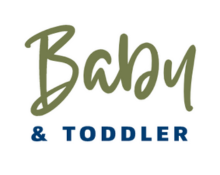
Breastfeeding growth spurts, also known as developmental leaps, are periods when a breastfed baby experiences a rapid increase in appetite and growth. These spurts typically occur around specific ages or developmental milestones and are a normal part of a baby’s growth and development. Here’s what you need to know about breastfeeding during growth spurts:
Timing of growth spurts: Growth spurts commonly occur at around 2-3 weeks, 6 weeks, 3 months, 6 months, and 9 months of age. However, every baby is unique, and growth spurts can vary in timing and duration.
Increased frequency and intensity of feeding: During growth spurts, your baby may want to breastfeed more frequently than usual. They may appear fussier, more unsettled, or show increased hunger cues, such as rooting, sucking on their hands, or increased alertness. This is their way of signaling their need for more milk to support their rapid growth.
Cluster feeding: Cluster feeding is common during growth spurts. This means that your baby may have shorter intervals between feedings and may want to breastfeed more frequently, often back-to-back. Cluster feeding helps increase your milk supply to meet your baby’s increased demand.
Responsive feeding: During growth spurts, it’s important to practice responsive feeding. This means offering the breast whenever your baby shows hunger cues, even if it feels more frequent than usual. Follow your baby’s cues for feeding and let them nurse for as long as they need to ensure they get enough milk.
Trust your milk supply: Growth spurts can make you doubt your milk supply, but rest assured that your body is capable of producing the milk your baby needs. The increased demand during growth spurts helps signal your body to produce more milk to meet your baby’s needs.
Take care of yourself: Growth spurts can be demanding for both you and your baby. Make sure to prioritize self-care, get plenty of rest, eat a nourishing diet, and stay hydrated. Taking care of yourself will support your ability to meet your baby’s increased feeding demands.
Remember, growth spurts are temporary and usually last a few days to a week. They are an important part of your baby’s development and help ensure they are growing and thriving. By responding to your baby’s increased feeding needs and allowing them to breastfeed as frequently as they require, you are providing them with the nourishment and comfort they need during these periods of rapid growth.
